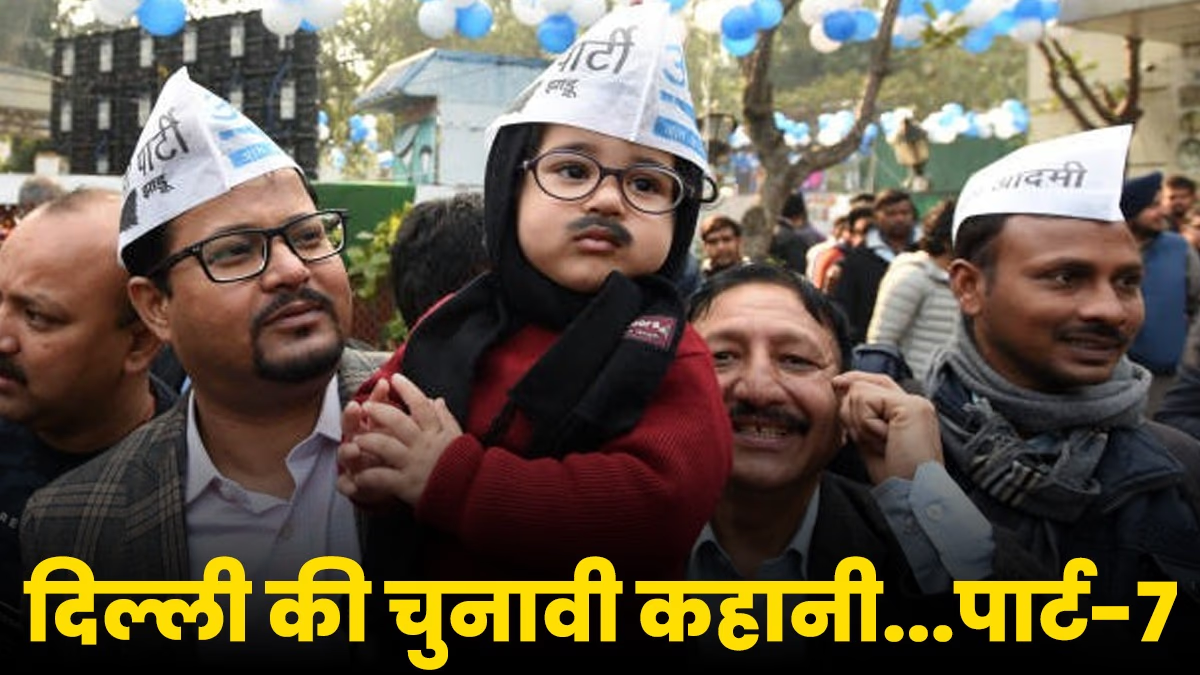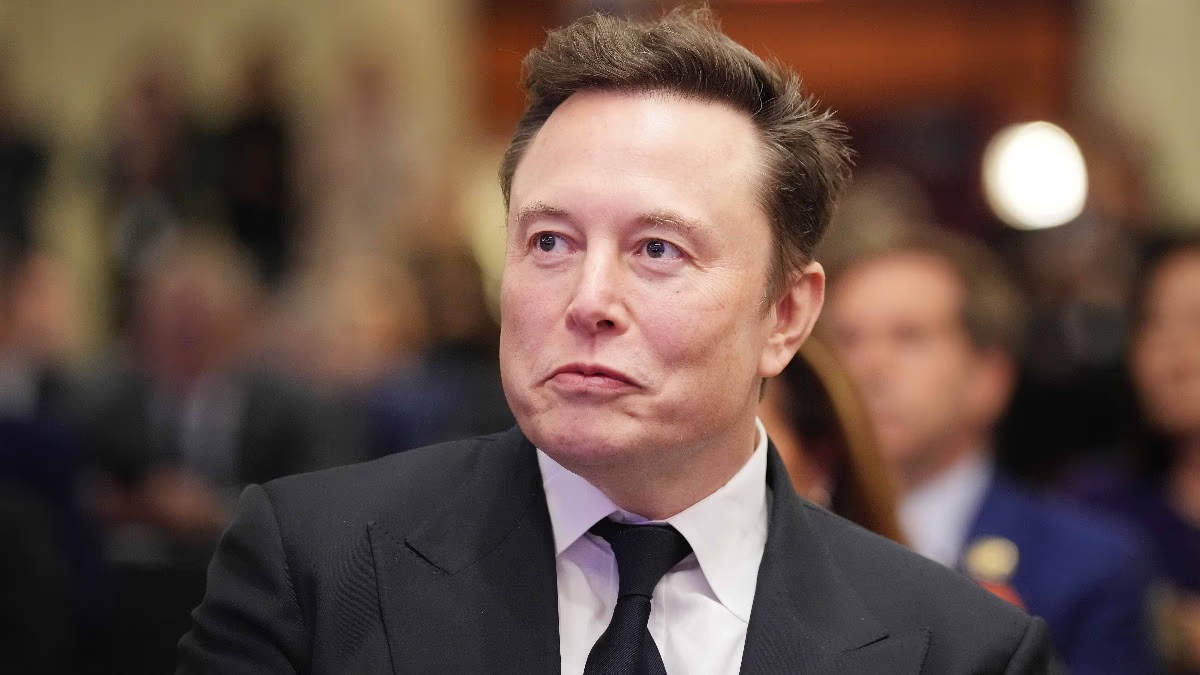The year 2020 marked the seventh assembly election in India's capital city, Delhi. Initially assumed to be a triangular contest, by February 11, the results confirmed the Aam Aadmi Party (AAP) clinching another victory and forming the government. For the third time, Arvind Kejriwal became the Chief Minister, equalling Sheila Dikshit's achievement. This victory held significant relevance amid protests at Shaheen Bagh against the Citizenship Amendment Act (CAA), while BJP targeted AAP and the opposition linked BJP to polarization. Consequently, the entire narrative of the election was built around this focus.
The 2020 Delhi Assembly Elections holds special significance in Indian political history. It was essentially a contest between local issues and the national agenda, where AAP triumphed, keeping both national parties, BJP and Congress, at bay for the third time. AAP captured 62 seats with 53.57% votes, while BJP secured 8 seats with 38.51% of the votes. Congress faced its second complete wipeout, with its vote share falling to 4.26%.
The Aam Aadmi Party garnered overwhelming support due to its policies and achievements. AAP emphasized local issues throughout its campaign, showcasing their accomplishments to the public. Initiatives such as the education model, affordable health facilities via mohalla clinics, free electricity and water schemes, and free bus rides for women became public favorites. The free electricity up to 200 units and free water up to 20,000 liters were immensely appreciated by the populace.
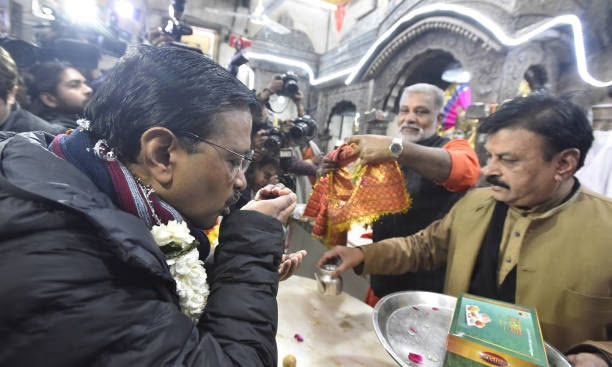
Source: aajtak
The facility of free travel for women in Delhi's DTC and cluster buses consolidated a significant female voter base in favor of AAP. Improvements in government school infrastructure, smart classrooms, and the enhancement of teachers' quality raised hopes for a better future. AAP connected with the masses through slogans like 'Baccha-Baccha Kejriwal'.
AAP Faced the Challenge in 2020 Elections
The 2020 election posed a significant challenge for AAP, as it was a test of its governance. In 2015, AAP had achieved an unprecedented victory with 67 seats. In 2020, the pressure was on to replicate that success and maintain public trust. During the elections, Kejriwal was observed embracing soft Hindutva as BJP highlighted the Ram Mandir. In contrast, Kejriwal chanted Hanuman Chalisa and visited temples, signaling that while he is a Hindu, his political approach diverges from BJP's Hindutva.
AAP Grappled with Internal Strife
During the elections, AAP also contended with party defections and rebellion. Kejriwal's considerable challenge was to ensure organizational unity and secure victory. Numerous key party leaders had either departed or joined other political factions. Former minister Kapil Mishra joined BJP, while former MLA Alka Lamba allied with Congress. Senior leaders like Ashutosh and Ashish Khetan distanced themselves from active politics. Founding member Kumar Vishwas was estranged from the party. Advisors Yogendra Yadav and Prashant Bhushan were no longer with the party, which could have been detrimental if AAP had lost. Therefore, the election was critical for the survival and future of AAP. AAP fought and won based on its record and grassroots organizational strength.
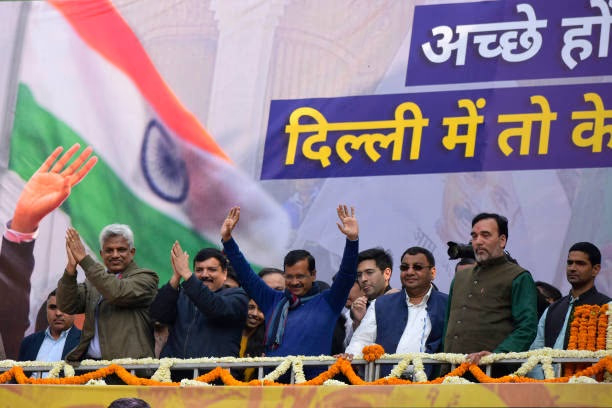
Source: aajtak
BJP's Setback in Modi Wave
For the second election in a row, the BJP, despite being propelled by the Modi wave, failed in Delhi. After its 2014 Lok Sabha sweep and successive MCD wins and another Lok Sabha clean sweep in 2019, BJP could not front a challenger to Kejriwal. Internal factionalism within BJP resulted in the absence of a chief ministerial candidate, which sent the wrong signal to voters, leading to their defeat.
In 2015, BJP had appointed Kiran Bedi as a late choice for the Chief Minister's position. However, the absence of a formidable local leader was palpable. Shahen Bagh protests were brought up to appeal to majoritarian sentiments, yet BJP struggled on key swing seats, narrowly losing in 2015.
Impactful Controversial Remarks in BJP's Campaign
Relying on PM Modi's popularity, BJP's electoral performance in 2020 showed minimal variation, despite winning all Delhi Lok Sabha seats in 2019. The controversy arose with one BJP leader's remarks suggesting harsh measures against perceived traitors during rallying, which likely impacted voter perception negatively.
Congress' Eroded Base
Once winning three consecutive terms from 1998 to 2008, Congress had been declining since 2013, with its voter base migrating to AAP. In 2015, Sheila Dikshit's absence marked another electoral loss. The 2020 election proved another setback, as Congress failed to address any decisive issues or present a compelling leader, leading to another wipeout.
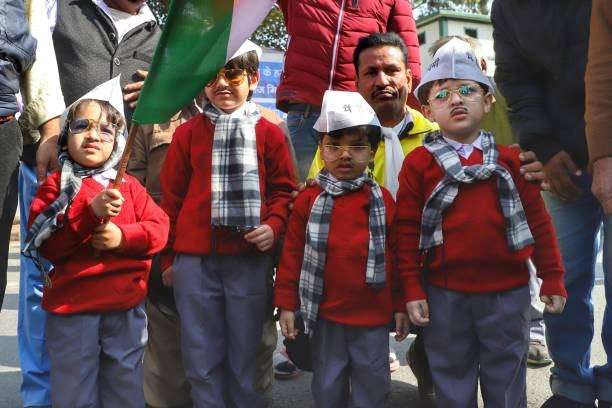
Source: aajtak
Congress Scored Zero Again
For the second time since 2015, Congress did not succeed in opening its account in 2020. Despite hopes for resurgence, it failed to make an impact, neither offering strong leadership nor presenting popular issues.
Statistics Indicate a Shift...
Analysts suggest Congress's weak strategy contributed to its defeat. Any improvement in Congress's or other parties' performance would have benefited BJP while denting AAP. As in 2015, AAP benefitted from Congress's lack of competitiveness.
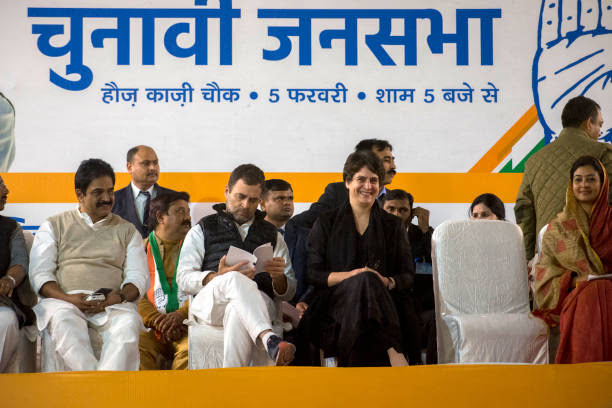
Source: aajtak
A Lack of Strategy Hindered Congress
Congress suffered from a clear strategic vacuum, failing to raise major issues or deliver promises to attract voters. The absence of strong local leadership post-Sheila Dikshit revealed a leadership void, which AAP quickly capitalized on with traditional and Muslim voter support. Congress couldn't propose new plans or vision effectively.
2020 Elections: Significantly Dramatic
Among Congress and Sheila Dikshit's traits is the shared achievement of forming continuous three-term governments and sealing their leadership triumphs. Sheila Dikshit led Delhi as Chief Minister for 15 successive years.
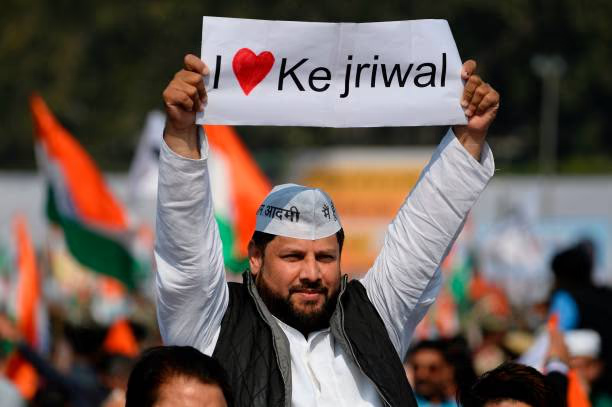
Source: aajtak
Where Did BJP Succeed?
BJP's wins came from regions like Laxmi Nagar, Vishwas Nagar, Rohtas Nagar, Gandhinagar, Ghonda, Karawal Nagar, Rohini, and Badarpur. In heavily Muslim-populated constituencies within the 70-seat assembly, all relevant seats were claimed by AAP, relegating BJP to second place. AAP's comprehensive candidate coverage extended across all constituencies, cutting 15 incumbent tickets in 2020. With 68 candidates fielded, BJP had competition on all 70 seats.
The Shaheen Bagh Protest and Voting Dynamics
Amidst ongoing protests in Delhi's Shaheen Bagh against CAA, the BJP spotlighted these demonstrations during its campaign, linking them to ideas of nationalism and law enforcement. Despite efforts to leverage these concerns for electoral advantage, voters weren't swayed. Instead, AAP emphasized developmental concerns, avoiding polemics during the election period. However, the post-election communal tensions in February 2020 further complicated the city's political landscape.
